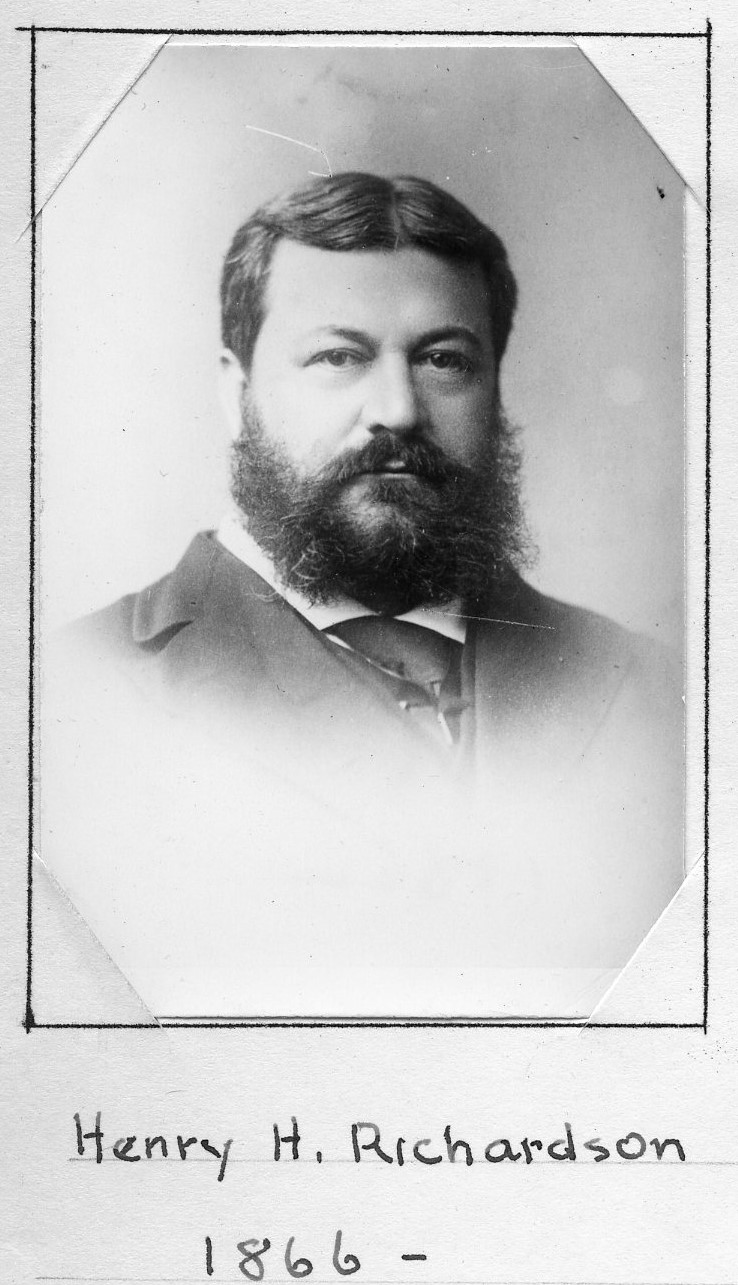Architect
Centurion, 1866–1867
Born 29 September 1838 in Saint James Parish, Louisiana
Died 27 April 1886 in Brookline, Massachusetts
Buried Walnut Hills Cemetery , Brookline, Massachusetts
, Brookline, Massachusetts
Proposed by Albert C. Haseltine and John Priestley
Elected 2 June 1866 at age twenty-seven
Archivist’s Note: Great-uncle of Henry R. Labouisse
Century Memorial
Richardson was born at Priestley Plantation in St. James Parish, Louisiana, and spent part of his childhood in New Orleans. He was the great-grandson of inventor and philosopher Joseph Priestley.
Richardson studied civil engineering at Harvard College, but eventually shifted to architecture, which led him to go to Paris in 1860 to attend the famed École des Beaux Arts. He was only the second U.S. citizen to attend the École—Richard Morris Hunt was the first.
He returned to the U.S. in 1865. The style that Richardson favored, however, was not the more classical style of the École, but a more medieval-inspired style, influenced by William Morris, John Ruskin, and others. Richardson developed a unique idiom, however, adapting the Romanesque of southern France. In 1869, he designed the Buffalo State Asylum for the Insane in Buffalo, the largest commission of his career and the first appearance of his eponymous Romanesque style. It is now a National Historic Landmark.
Richardson’s most acclaimed work is his 1872 Trinity Church in Copley Square, Boston. The Boston Public Library was built across from it later by Richardson’s former draftsman, Charles Follen McKim. The Trinity Church solidified Richardson’s national reputation and provided major commissions for the rest of his life. Evidence of Richardson’s contemporary recognition is that, of ten buildings named by American architects as the best in 1885, fully half were his: Trinity Church, Albany City Hall, Sever Hall at Harvard, the New York State Capitol in Albany (as a collaboration), and Town Hall in North Easton. Richardson also designed six railroad stations for the Boston & Albany railroad as well as two stations for other lines. All of the stations were landscaped by Richardson’s frequent collaborator, Frederick Law Olmsted.
Richardson died in 1886 at age 47 of Bright’s disease, a kidney disorder.
James Charlton
“Centurions on Stamps,” Part I (Exhibition, 2010)

